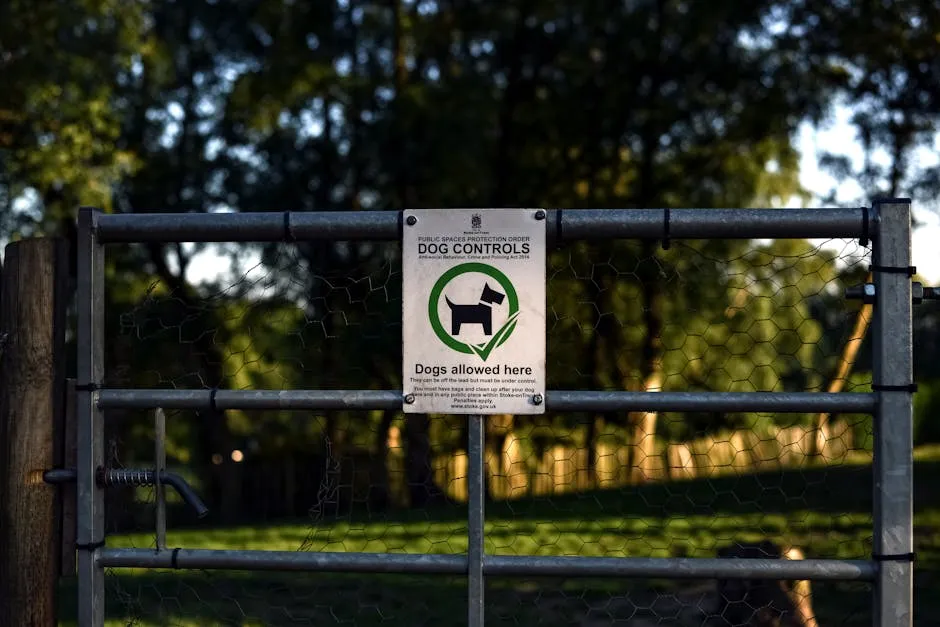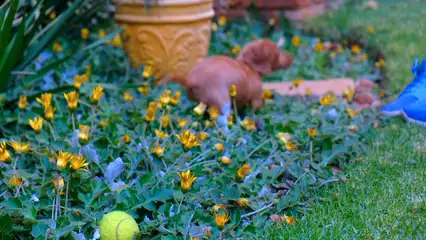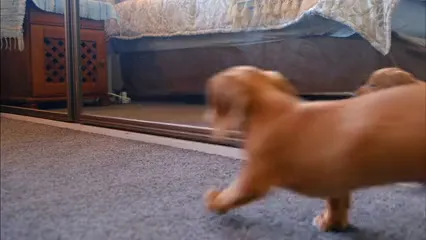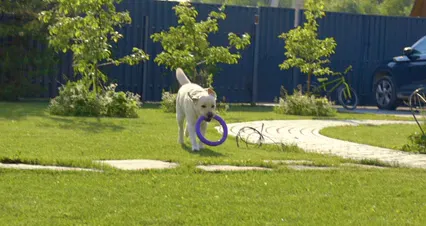Introduction
Creating a dog-friendly garden can be a delightful project. Picture this: a space where your furry friend can frolic freely, dig to their heart’s content, and explore without a care in the world. It’s a garden where both you and your pup can bask in the beauty of nature. But how do you make this dream a reality?
In this guide, we’ll share invaluable tips for designing a garden that’s not only visually appealing but also safe and engaging for your four-legged buddy. From selecting the right plants to establishing play zones, we’ll cover everything you need to know to create a dog-friendly paradise. So, let’s roll up our sleeves and get started on transforming your outdoor space into a vibrant sanctuary for you and your canine companion!
Summary
In this guide, you’ll discover how to create the ultimate dog-friendly garden that balances beauty with practicality. First, we’ll discuss the importance of choosing plants that are safe for your dog, like lavender and sunflowers, while steering clear of toxic options such as azaleas and yews. Next, effective fencing solutions will be highlighted to keep your pup secure and happy.
Play areas are essential too! Designate specific zones for your dog to romp and play, including sandpits or agility equipment to keep them entertained. Consider investing in a Dog Agility Training Equipment Set to keep your pup active and engaged! We’ll also address how to mitigate potential garden damage, from creating protective surfaces to managing your dog’s natural digging tendencies.
By following these guidelines, you’ll cultivate a harmonious relationship between your garden and your dog, ensuring both can thrive together. Curious about the best plants for your pup? Wondering how to maintain a fabulous garden despite your pet’s playful antics? Keep reading to uncover the tips and tricks for a successful dog-friendly garden!

1. Understanding Your Dog’s Needs
1.1 Recognizing Dog Behavior
Every dog is unique, just like their personalities. Some breeds are known for their digging prowess, while others love to chew on anything within reach. Take Beagles, for example; they are notorious diggers. If you have one, prepare for a bit of landscaping chaos!
On the flip side, Greyhounds are more about lounging around than digging up your prize petunias. Poodles are curious creatures who might nibble on your plants out of sheer boredom. Understanding your dog’s breed and their natural behaviors is vital.
Take the time to observe your furry friend. Does he love to dig? Does she chew on your shoes? Tailoring your garden to accommodate these habits can save both your plants and your sanity. Designate specific areas for digging or create chew zones to keep your garden safe. A great solution for chewing is a Dog Chew Toy that can keep them occupied!
1.2 Essential Garden Features
Water and shade are essential in any dog-friendly garden. Dogs can’t sweat like we do, so they rely on shade to cool off. A shady spot under a large tree or a cozy doghouse can be their favorite hangout during hot days. Pair that with a water bowl filled to the brim, and you’ve got a happy pup!
Now, let’s talk boundaries. A secure fence is your best friend. It keeps your curious explorer safely contained while allowing them to enjoy the great outdoors. Consider your dog’s jumping ability. For larger breeds, a fence height of at least six feet is ideal. Choose sturdy materials like wood or vinyl; chain link can be an option too, but be cautious of gaps. For added peace of mind, take a look at this Pet Barrier Fence to keep your dog safe!
By understanding your dog’s behaviors and ensuring essential features, you’re setting up a garden that your furry buddy will love!

1.3 Creating a Variety of Textures
Designing a dog-friendly garden is all about engaging your furry friend’s senses. One way to do that is through varying plant heights and textures. Imagine your pup bounding through a garden filled with diverse surfaces—it’s like a canine playground!
Start by incorporating plants of different heights. Tall grasses can sway in the wind, creating a mesmerizing visual effect. Low-growing herbs, like thyme or chamomile, offer a fragrant carpet for your dog to explore. Think of it as a doggy sensory adventure!
Mix textures by combining coarse materials, like rough bark mulch, with soft, plush grass. This variety can stimulate your dog’s paws while they frolic around. Plus, it adds interest to your garden. You could even use smooth stones interspersed with soft grass patches. Your dog will love the challenge of navigating this tactile wonderland!
Consider adding raised beds, which not only create a unique look but also provide a different height for your dog to investigate. You can plant dog-safe herbs, like rosemary and sage, that your pup can sniff while lounging nearby. This setup encourages exploration while keeping your plants safe. If you’re looking for a great way to create those raised beds, check out this Raised Garden Bed Kit.
For an extra touch, introduce fun elements like tunnels made from soft materials. These can be a thrilling hiding spot for toys or treats. Your dog will have a blast darting in and out, promoting healthy playtime.
Ultimately, creating a garden with varied textures and heights not only appeals to your dog’s curiosity but also enhances the overall beauty of your outdoor space. With a little planning, you’ll have a garden that’s a feast for the senses—both for you and your four-legged friend!

2. Managing Urine and Digging
2.1 Training Tips for Lawn Preservation
Dogs and gardens can clash, especially when it comes to urine and digging. But fear not! With a bit of training and clever strategies, you can maintain a happy lawn while keeping your furry friend entertained.
Start by teaching your dog where it’s okay to do their business. Designate a specific area for bathroom breaks. Use positive reinforcement, like treats or praise, when they choose the right spot. This encourages them to use the designated area instead of your pristine grass. Consider using Dog Potty Training Pads to make the process easier!
Consider using a command like “go potty” to reinforce the behavior. Consistency is key. Take your dog to this spot regularly, especially after meals or playtime. Eventually, they’ll associate this area with relief.

2.2 Mitigating Urine Burn
Urine burn can leave your lawn looking like a patchy desert. To combat this, water the affected areas immediately after your dog urinates. This dilutes the urine and lessens the damage.
Another option is to train your dog to use a gravel or mulch area. This can absorb urine without harming your grass. You can even plant dog-friendly grasses that are more resilient to urine, like fescue or ryegrass.
2.3 Keeping Plants Safe
Your garden is a wonderland for your dog, but it can also pose risks to your precious plants. Thankfully, there are smart ways to protect them.
Start with barriers. Low fences or decorative trellises can keep dogs away from vulnerable plants. Raised beds are another fantastic solution, allowing you to plant delicate flowers without fear of canine chaos. Consider using Dog-Friendly Mulch to keep your garden safe!
Consider using sturdy plants that can withstand a little roughhousing. Opt for robust options like lavender or sage, which are also dog-safe! These plants are less likely to be uprooted during your pup’s playful antics.

2.4 Using Deterrents Wisely
Deterrents can help keep dogs out of sensitive areas. Try using natural repellents like citrus peels or vinegar. Dogs typically dislike these smells, making them effective barriers.
Another clever trick is to use motion-activated sprinklers. These will give your dog a surprise spray if they venture too close to the plants, teaching them to steer clear. Just ensure any deterrents are safe and non-toxic for your furry friend.
By implementing these strategies, you can create a dog-friendly paradise that both you and your beloved pet will enjoy. Your plants will thrive, and your dog will have the freedom to explore without causing chaos!

Conclusion
Creating a dog-friendly garden is a labor of love that pays off in wagging tails and joyful barks. By thoughtfully planning your space, you can blend aesthetics with functionality. Start by incorporating safe plants that won’t harm your pup if they decide to sample the greenery. Secure boundaries are essential, ensuring your furry friend stays safe while exploring their domain. Designated play areas, like sandpits or agility zones, offer your dog a place to unleash their inner goofball. Don’t forget to provide a comfy spot for them to relax with an Outdoor Dog Bed!
Remember, your garden isn’t just a backdrop; it’s a shared sanctuary for both you and your canine companion. So, grab your gardening gloves, let your creativity flow, and embark on this exciting adventure together! Your dog will thank you with every wag of their tail.

FAQs
What are some easy-to-grow dog-friendly plants?
If you’re new to gardening, start with these easy-to-care-for plants that are safe for dogs: Rosemary: A fragrant herb that’s hardy and useful. Lavender: Beautiful blooms and calming scents for both you and your pup. Basil: A culinary favorite that’s safe and easy to grow. Sunflowers: Tall and cheerful, perfect for brightening any garden. Calendula: These vibrant flowers are not only pretty but safe for dogs.
How can I prevent my dog from digging up my flowers?
Training your dog to respect your garden is key. Here are some tips: Designate a Digging Area: Create a special spot filled with sand or loose soil. Bury toys or treats to encourage digging there. Use Commands: Teach commands like “leave it” or “no dig” to reinforce boundaries. Supervise: Keep an eye on your dog while they’re outside, redirecting them to the digging area when necessary. Positive Reinforcement: Reward your dog when they choose the designated area instead of your flower beds.
Is artificial grass safe for dogs?
Artificial grass can be a great option for dog owners. It’s durable and easy to clean. Here are some benefits: Low Maintenance: No mowing or watering required! Consistent Surface: No muddy paws after playtime. Odor Reduction: Some types come with infill that absorbs odors and moisture, making clean-up a breeze. However, ensure that the product is non-toxic and designed specifically for pet use.
How can I keep my dog cool in the garden during summer?
Keeping your furry friend cool is essential during hot days. Here’s how: Provide Shade: Set up a shaded area with a doghouse or a canopy. Fresh Water: Always have a bowl filled with cool water available. Cooling Mats: Consider investing in mats that help regulate your dog’s body temperature. Pool Time: A kiddie pool can be a fun way for your dog to cool off.
Are there any specific garden features that can enrich my dog’s experience?
Absolutely! Here are some enriching garden features: Water Features: A small fountain or pond can be enticing for your dog. Tunnels and Hiding Spots: Incorporating tunnels made from soft materials or bushes can create fun exploration spots. Varied Textures: Mixing surfaces like grass, sand, and mulch can provide sensory experiences for your dog. Climbing Structures: Low ramps or balance beams can promote physical activity and mental stimulation.
Please let us know what you think about our content by leaving a comment down below!
Thank you for reading till here 🙂
If you’re looking for more guidance on how to train your dog, especially if you’re adopting a rescue dog with anxiety, check out these Dog training tips for adopting a rescue dog with anxiety.
All images from Pexels





